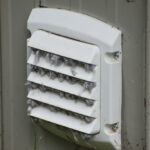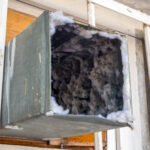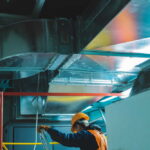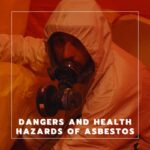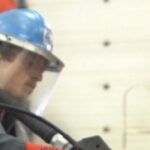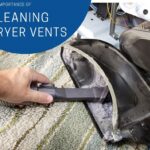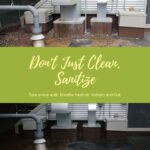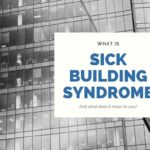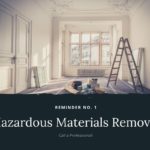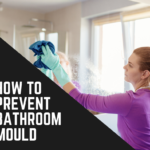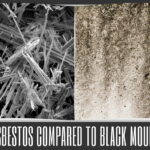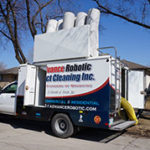It’s very common for older buildings, especially those constructed before the 1990s, to contain asbestos hidden away within walls, floors, or insulation. Asbestos was generally used in tiles, siding, insulation, and as a compound between pieces of sheetrock. Although it’s rarely used today, tenants of older homes or commercial leases may be living in spaces constructed with substantial amounts of asbestos without even knowing it. This article will discuss where to find asbestos in your home or place of business and how you can address it.
Why Asbestos Matters
First off, it’s important to understand why asbestos is a concern for any home and business owners. Asbestos is a dry, powdery material that when disturbed releases small fibres into the air as dust. This could happen for several reasons such as damage to the building or routine construction. Normal wear and tear of pipes and furnaces, construction on roofs, or deterioration to ceilings and walls all risk dispersing asbestos dust into your home or business. Some types of pipes containing asbestos can also distribute harmful chemicals into water flow as they deteriorate over time. Because asbestos can have many harmful health effects, it is highly important to avoid exposure if asbestos is present in your home.
Where and How to Find Asbestos
It can be difficult to determine the presence of asbestos without proper lab testing. A professional lab test will closely analyze the substances within your home to verify if they indeed contain harmful asbestos residue. To stay safe, it is important to hire a professional to collect samples, as any level of exposure is dangerous and collection should be done safely and carefully.
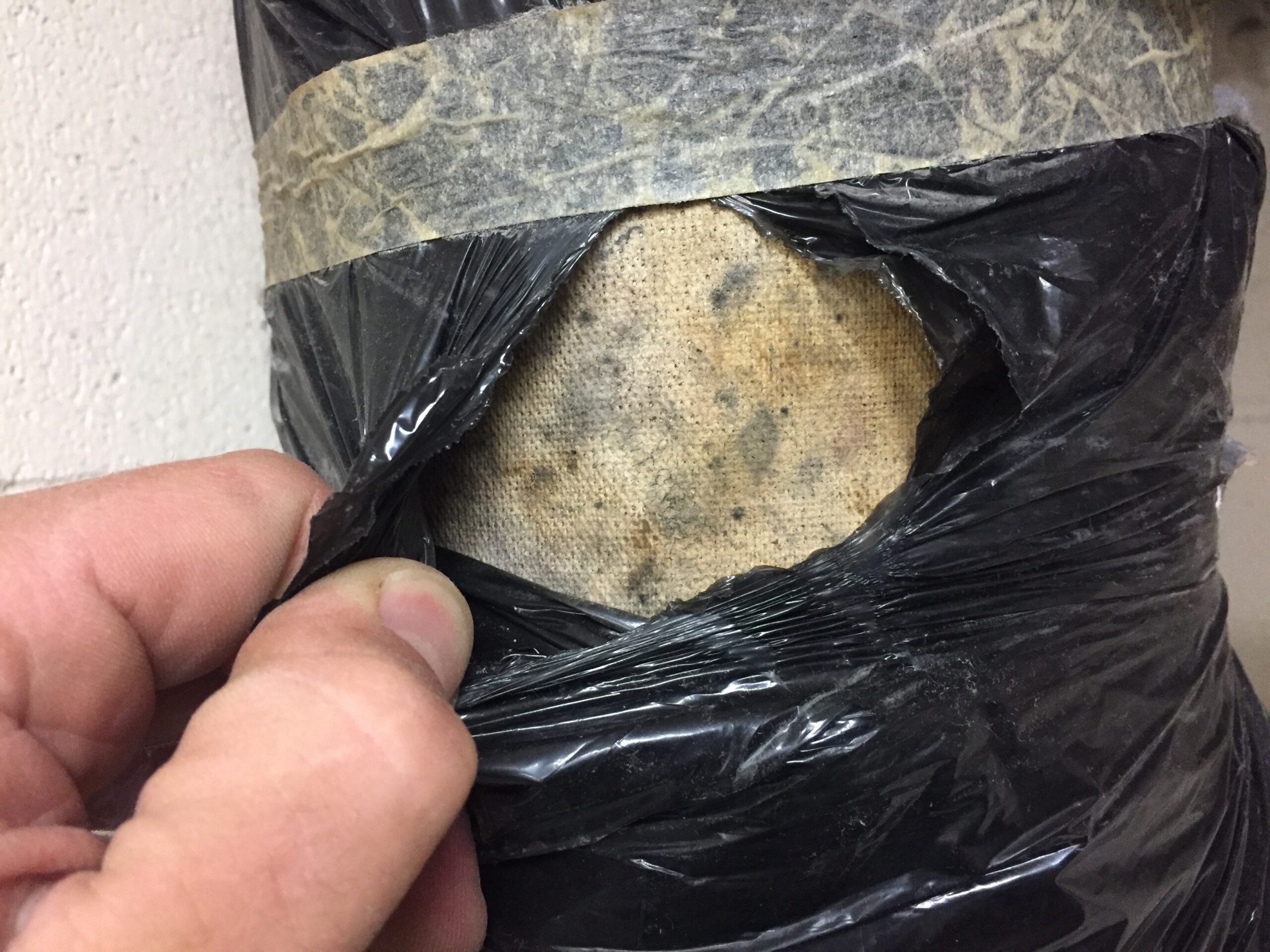
Depending on where asbestos is detected, you may need to have it fully removed. If the asbestos material is highly fine (ie. insulation), it is far more likely to disintegrate when disturbed and enter the airflow as a powder or dust. This presents a hazard that should be addressed through the immediate removal of all of the material. If the asbestos is still in “good” condition — meaning it is still packed and self-contained (ie. floor tiles) — then it presents a lower level of risk. Of course, any asbestos is a concern, as even self-contained samples can deteriorate over time and become airborne if there is slight damage or even construction around the area.
Some detections can be addressed through repairs or the construction of barriers to add a layer of containment (ie. pipe insulation can be encapsulated to prevent from any further degradation). However, although sealing off and isolating asbestos is a way to mitigate the risk is not an absolute solution given the possibility of further wear and tear to the area in question.
Many homeowners opt for a full removal of all asbestos containing materials to ensure that no further issues arise down the road. Asbestos removal cannot be done without disrupting the materials being removed, therefore it must be done by an experienced professional using proper abatement procedures and hoardings with proper ventilation and airflow. To ensure no hazardous fibres were released into the home or business airflow in the abatement process, it is a good idea to take an air sample once the removal work is finished.
Since safety is such a major factor, it is critical to work with trained and certified professionals who have experience in asbestos removal. Attempting DIY asbestos abatement is extremely dangerous and can expose your home or place of business to air quality hazards. Contact us today for effective and professional asbestos abatement that is sure to keep yourself and the people around you safe during the entire process.
Why Asbestos Matters
First off, it’s important to understand why asbestos is a concern for any home and business owners. Asbestos is a dry, powdery material that when disturbed releases small fibres into the air as dust. This could happen for several reasons such as damage to the building or routine construction. Normal wear and tear of pipes and furnaces, construction on roofs, or deterioration to ceilings and walls all risk dispersing asbestos dust into your home or business. Some types of pipes containing asbestos can also distribute harmful chemicals into water flow as they deteriorate over time. Because asbestos can have many harmful health effects, it is highly important to avoid exposure if asbestos is present in your home.
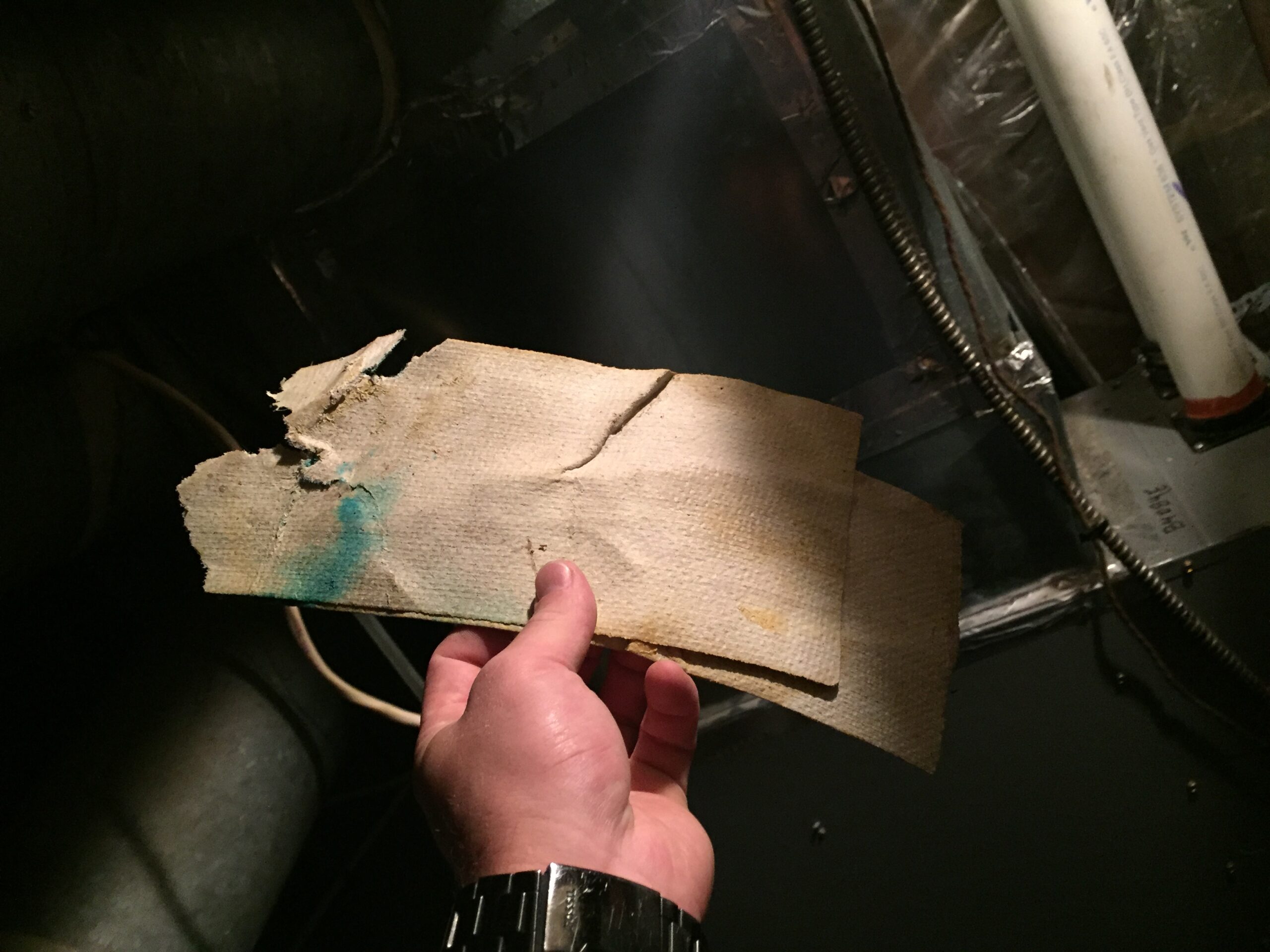
Where and How to Find Asbestos
It can be difficult to determine the presence of asbestos without proper lab testing. A professional lab test will closely analyze the substances within your home to verify if they indeed contain harmful asbestos residue. To stay safe, it is important to hire a professional to collect samples, as any level of exposure is dangerous and collection should be done safely and carefully.
Depending on where asbestos is detected, you may need to have it fully removed. If the asbestos material is highly fine (ie. insulation), it is far more likely to disintegrate when disturbed and enter the airflow as a powder or dust. This presents a hazard that should be addressed through the immediate removal of all of the material. If the asbestos is still in “good” condition — meaning it is still packed and self-contained (ie. floor tiles) — then it presents a lower level of risk. Of course, any asbestos is a concern, as even self-contained samples can deteriorate over time and become airborne if there is slight damage or even construction around the area.
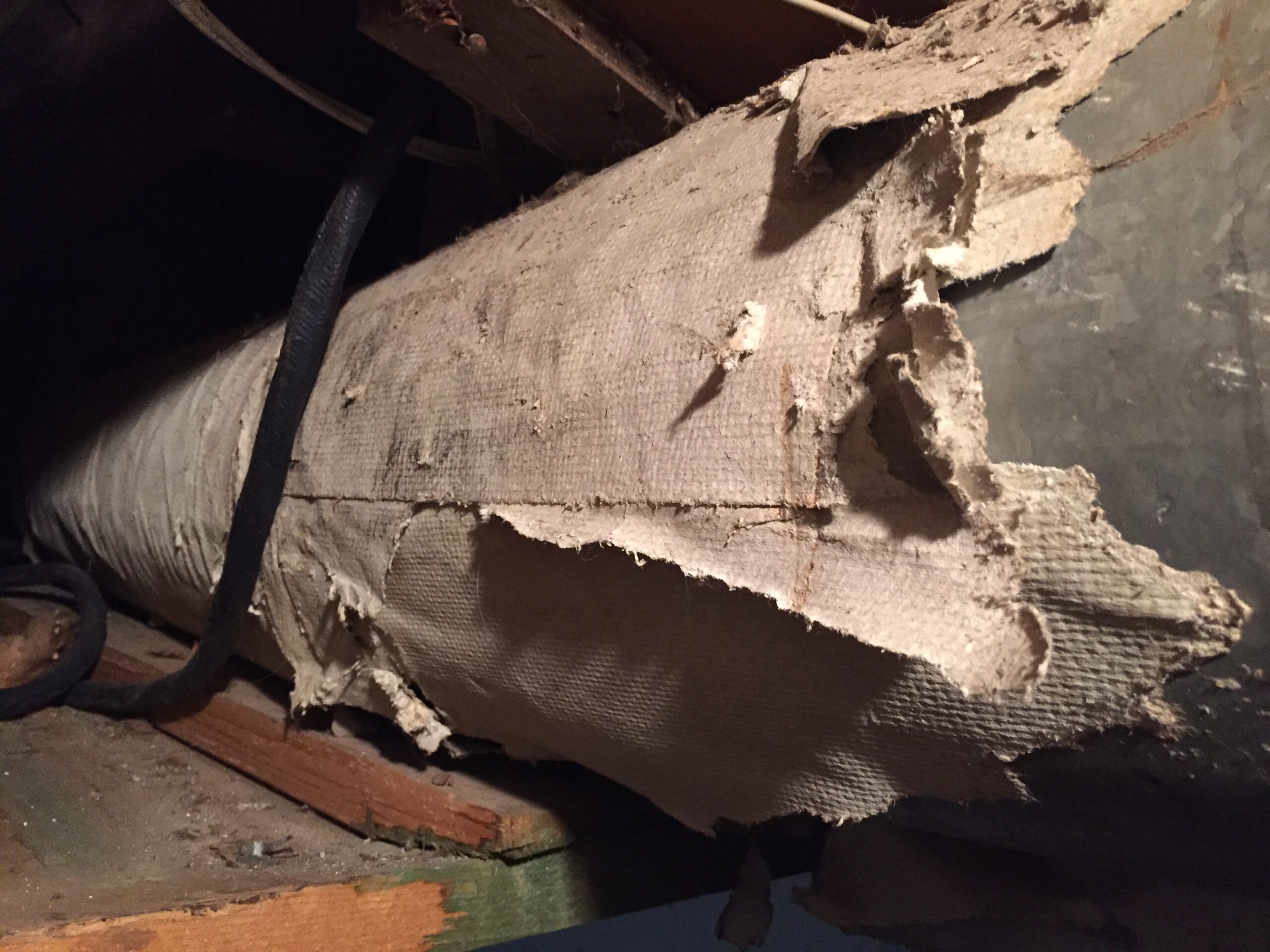
Some detections can be addressed through repairs or the construction of barriers to add a layer of containment (ie. pipe insulation can be encapsulated to prevent from any further degradation). However, although sealing off and isolating asbestos is a way to mitigate the risk is not an absolute solution given the possibility of further wear and tear to the area in question.
Many homeowners opt for a full removal of all asbestos containing materials to ensure that no further issues arise down the road. Asbestos removal cannot be done without disrupting the materials being removed, therefore it must be done by an experienced professional using proper abatement procedures and hoardings with proper ventilation and airflow. To ensure no hazardous fibres were released into the home or business airflow in the abatement process, it is a good idea to take an air sample once the removal work is finished.
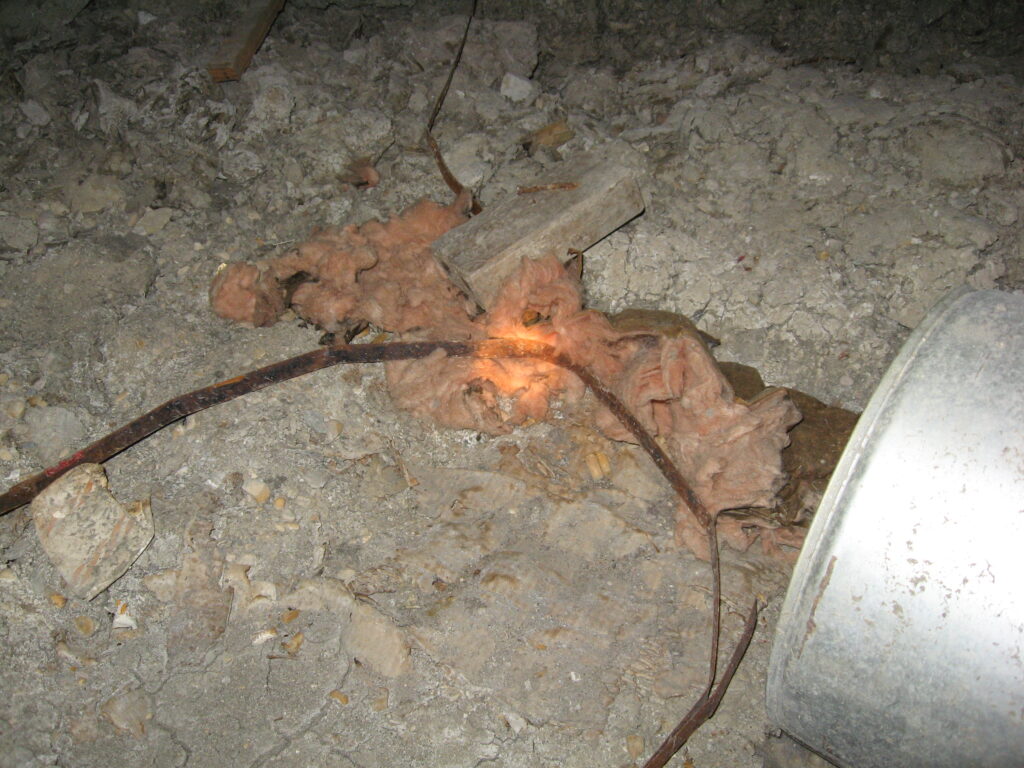
Since safety is such a major factor, it is critical to work with trained and certified professionals who have experience in asbestos removal. Attempting DIY asbestos abatement is extremely dangerous and can expose your home or place of business to air quality hazards. Contact us today for effective and professional asbestos abatement that is sure to keep yourself and the people around you safe during the entire process.


